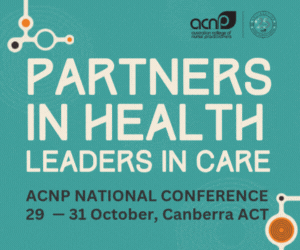When now retired nurse Chiew Ung Tan (CU) moved from Singapore to Melbourne in 2003 to work at a large private hospital, she was unprepared for how difficult it would be to find a home.
CU had lived and worked in Sydney and Melbourne for 10 years as a graduate nurse in the 1980s but returned to Singapore to care for her ailing mother in 1991. “I did my training in England but moved to Australia with some friends to start my career as a graduate nurse. I trained as a midwife, so I was keen to work in this area when I arrived in Sydney. I was told there was no work for me in midwifery and I was placed in a special baby care unit.”
CU resigned from her job in Sydney after being moved into the ICU department of the infant special care unit after only a few weeks in the role.
“When they moved me into ICU I was out of my depth professionally and I told the DON I wasn’t comfortable or qualified, but she insisted I remain in ICU. One day I came back from a break and a baby turned blue. A doctor and I resuscitated the baby, but it gave me a real scare, so I resigned from the job and moved to Melbourne,” she says.
“I loved my work in Melbourne. I ended up in gynaecology at the Royal Women’s and really enjoyed it. I was offered a job in midwifery but decided I was learning a lot in gynae and it was an experience I knew would be useful if I ended up back in midwifery.”
After 10 years at the Royal Women’s in a job she loved CU returned to Singapore when her mother fell ill.
“By the time I arrived back in Singapore my mother had improved. I told her I would stay on for a few months to make sure she was ok and then I would return to Melbourne for work. Somehow I ended up staying on in Singapore and after five years my permanent residency status in Australia was cancelled.”
CU spent the next 12 years in Singapore working as a midwife and nurse. In 2003 she attended a recruitment seminar in Singapore run by an Australian firm. She signed up for a two-year contract to return to Australia to work as a midwife. In 2003 she returned to Melbourne having lost many of the connections she had made during her previous stay.
“I arrived in Melbourne without a great network and stayed briefly with a friend, but I didn’t like it because it was too crowded. I ended up sleeping on the floor- there just wasn’t enough room. I was paying rent but didn’t have my own space.”
After living with her friend for three months and sleeping on the floor, CU moved into a boarding house in Richmond. “It was a very anxious and lonely time. I didn’t have any family and quite a few of the other women who lived in the boarding house had mental health and drug and alcohol issues,” CU says.
“I stayed at the boarding house for five years because I couldn’t find a decent place to live on my own. It was too expensive to rent my own place as a single woman on a part-time salary.”
Two significant factors occurred in 2010 that resulted in CU being at risk of homelessness. One of the women who lived at the same boarding house experienced a psychotic episode and accused CU of stealing her belongings. The situation escalated, and CU was physically assaulted.
A week after this incident the rooming house owners where CU was living announced they were closing for renovations. As luck would have it a new affordable housing project was opening in Elizabeth Street in Melbourne when CU found herself in desperate need of a new home.
“I saw an advertisement for a new affordable housing development in the CBD and decided I would look into it,” she says. “Some of the housing support workers that came to help us find new homes when the rooming house was closing also mentioned Common Ground as an option and a few of us took up this opportunity and moved in.”
Elizabeth Street Common Ground (ESCG) is based on a model that includes a mix of permanent, supported accommodation collocated with independent affordable housing units. The model, founded in New York, has proved successful in delivering long term, safe and secure housing for people who have experienced chronic homelessness and those at risk of homelessness.
There are common ground housing developments across Australian cities now. CU was one of the first tenants to move in to ESCG when it opened its doors in 2010. “I think 12 of us from the rooming house applied and two of us are still here,” CU says.
“Living here has been a great experience – it is a secure home for me. I continued working part-time as a nurse until I was 67. Since I retired in 2014 I have more time to help out in the rooftop garden and make other tenants feel welcome.”
Women, like CU, who are over 55 years of age are the fastest growing group of people experiencing homelessness according to the 2016 Census. On Census night in 2016, 6,866 women over 55 were homeless, an increase of 31% from the previous Census in 2011.
Overall homelessness in Australia increased by 14% in five years from 2011 to 2016. The ABS homelessness statistics, published in March 2018, revealed people living in ‘severely’ crowded dwellings (defined as needing four or more extra bedrooms to accommodate the people who usually live there) was the greatest contributor to the increase in national homelessness (up by 23.5%).
Dr Paul Jeffs, ABS General Manager of Population and Social Statistics, said while there had been an overall increase in the number of people experiencing homelessness in Australia, the numbers are made up of ‘various distinct groups, each telling a different story’.
“On Census night, 8,200 people were estimated to be ‘sleeping rough’ in improvised dwellings, tents or sleeping out,” Dr Jeffs says. This figure represents a 20.4% increase between 2011 and 2016.
An increasing number of younger and older Australians also experienced homelessness between 2011 and 2016. Younger people aged 20 to 30 accounted for 25% of the 116,427 people who experienced homelessness in 2016.
Social commentators attribute family violence and economic insecurity as key factors at play in the rise of homelessness among older women. Launch Housing Deputy CEO Dr Heather Holst says women who have been in low paid jobs and those leaving family violence have increasingly been priced out of the private rental market.
“Despite all of the talk about how great our economy is we have seen a steady increase in the casualisation of work and many older women on low incomes who can no longer afford to stay in private rental. Add to that the fact that you might also experience family violence and be forced to leave home with little or no financial backing and you’re really in trouble.”
CU certainly didn’t expect to find herself at risk of homelessness while working part time as a nurse, but even when she arrived in Melbourne to start her new job in 2003 she was unable to find affordable housing.
“I look back at the time I spent living in the boarding house and I feel I was lucky because I had a place to live, but it was hard. I had my own room, but I had to share a kitchen, bathroom and toilet. It was difficult because if someone was having a bad day and they were using drugs or alcohol you didn’t feel safe.”








